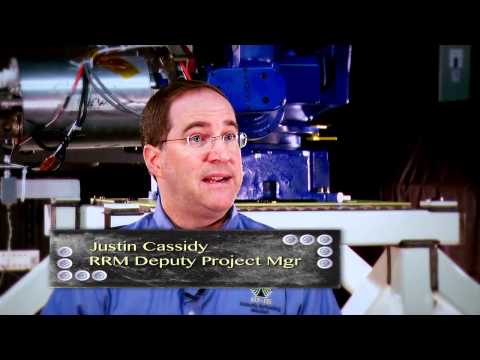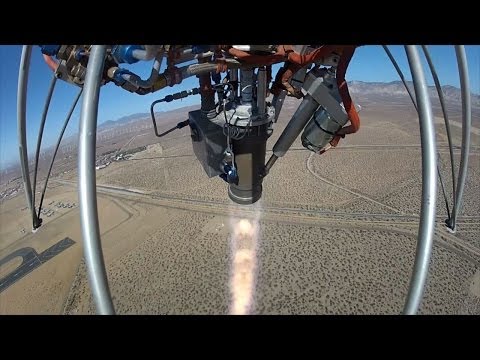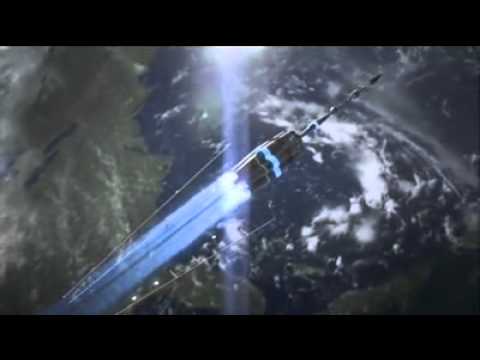10 Mind-blowing Interstellar Propulsion Systems
If we’re ever going to explore and eventuallycolonize the galaxy, we’re going to needfunctioning propulsion systems to do it. This goes for the nearest star, or the otherside of the Milky Way. So here are 10 hypothetical interstellar propulsionsystems we might some day use to travel interstellarspace. Number 10. Light SailsLight sails at their simplest are sails thatfunction not on wind, but on light pressure. Lasers stationed on earth, or in space, canexert pressure on sails. Sails in general are ancient ideas, and wehave lasers so out of all the entries on thislist, we are closest to realizing this one. In fact, there are multiple programs lookingto build and use laser-driven lightsails,including Breakthrough Starshot, which looksto send a swarm of microprobes attached tolight sails to Alpha Centauri at as much as20 percent of the speed of light, and getthem there in just two decades. However, scaling this up to manned capabilitypresents significant challenges. But as a means of exploring nearby stars,if programs like Breakthrough Starshot aresuccessful, interstellar exploration may beginwithin the lifetimes of people alive today,though one could already argue that we’redoing that using instruments from Voyagerto study the conditions of the fringes ofthe interstellar medium. Number 9. Nuclear Pulse PropulsionOver the decades there have been several proposalsto build spacecraft accelerated by nucleardetonations to reach high enough speeds forrealistic interstellar travel. The concept is simple, build a spacecraftwith a blast shield at the back and then periodicallydrop nuclear bombs out of the back of theship, detonate them, and that in turn pushesthe space craft along. Increasing public distaste for nuclear projectsand nuclear test bans sidelined work in thefield of nuclear pulse propulsion, but itdoes provide us with a future means of interstellartravel. And, nuclear detonations in space aren’tthe problem that they are here on earth, spaceis already full of sources of radiation, thoughlaunching the materials off of earth to fuelsuch a spacecraft does pose risk, as is oftenpointed out when NASA launches radioactiveisotope powered probes such as the curiosityrover. This type of propulsion is, in principle,something that current technology is closeto being able to do. Number 8. StarseedThis option is effectively a nanoprobe gun. Using a 1000 kilometer long hollow tube linedwith electrodes, exploratory nanomachinescould then be electrostatically launched atvery high speed, up to one third of the speedof light. This puts a one way trip to the alpha centaurisystem at roughly 13 and a half years. That’s fast, and the main advantage is thatthe researchers sending these kinds of probeswould get to see the fruits of their researchwithin their lifetimes. There are two downsides to this method however,number one would be the tube itself. Given it’s length, the tube would be difficultto keep straight and would need to be keptwell away from gravitational sources in spaceto keep the nanomachines from impacting thetube while being accelerated. It’s likely that the materials to createthis are yet to be fully developed. The other issue is that nanotechnology isgenerally still in its infancy, so this methodlays at least decades off. But one can also imagine many types of hypotheticalnanoprobes, such as modular devices that assembleinto a larger probe upon reaching their destination. Or von neumann probes that can self-replicateon site, or build custom equipment withouthaving to return to earth. How far this scales up, or if this could everbe used to do more, such as 3d print customhumans on site to colonize a planet remainsto be seen in the relatively far future. Number 7. No Hurry Propulsion and Dyson’s SlingshotAs it stands, at currently attainable speeds,it would take our current rocket-based technologycenturies to get to the nearest star system,voyager II for example will need 42,000 yearsbefore it will come close to another star,and it’s only ten light-years away. But over vast amounts of time, hundreds ofthousands to millions of years, the galaxyshrinks and can be fully colonized in termsof a few million years at slower speeds. If you have that kind of time, or you’rein a situation such as a multigenerationalship built, say, from an asteroid, then slowermethods can be used. Other possibilities include powerful rocketslaunched not from earth, but from space andand also gravitational slingshotting. But if you chose your destination wisely,you can do much more with this than you mightthink. The concept of Dyson’s slingshot comes intoplay. If you can get to a certain type of binarysystem, such as closely orbiting white dwarfsor even binary neutron stars, these typesof systems can be moving very rapidly. Some of that energy can be imparted to a spacecraftpassing closeby and slingshot it out on anew trajectory at much higher, relativisticspeeds. In other words, it may take a while to getto a binary neutron star system, but onceyou’re there, you’re on your way muchfaster to wherever you wish to go. Number 6. Nuclear Fusion DrivesFusion always seems right around the corner,and has been for decades. But recent developments may be changing thatstatus quo. While large fusion reactors like what mightbe developed from megaprojects like ITER wouldn’tseem useful in space until decades, at least,from now, there is a lesser known, somewhatmore secretive project that may yield resultsmuch sooner. It’s the Compact or High Beta fusion reactorbeing developed by Lockheed Martin’s skunkworks. If that project works out, fusion could notjust finally be right around the corner, butthe reactor would be small enough to launchinto space. If that ends up the case, and if the ideaworks, that would allow energy generationin space on unheard of scales. The International Space Station for example,has about 75-90 kilowatts available to itgenerated by an acre of solar panels. High beta fusion reactors could produce ahundred or more megawatts, enough to run alarge city, yet be about the size of a citybus. With that kind of power available, goodbyeISS, hello Battlestar Galactica. There are several ways to use fusion as apropulsion system. One is direct thrust using the fusion reaction,and the other would be to generate electricityfor the various electric methods of producingthrust, such as ion drives, plasma drives,photonic drives and so on. Number 5. The Antimatter ValkyrieImagine being able to travel at 92% of thespeed of light, and then when you need it,have the means to slow back down. And unlike some hypothetical faster than lightmethods of propulsion using exotic forms ofmatter, this one can be done with a materialwe’ve already created here on earth, thoughit’s perhaps the most costly material onearth to produce. Anti-Matter. Assuming that anti-Matter in the future canbe created in sufficient quantities efficientlyenough to make it worth it, you could buildthe Valkyrie. How this works is that you create a smallmatter-anti-matter reaction, and the exhaustfrom their total annihilation pushes you along. Then you add more anti-matter, on the orderof a 100 tons or so for the length of yourtrip, and in the process, you’ve reachedsome seriously relativistic speeds. As designed, the Valkyrie works more likea train of sorts, with the the crew compartmentsand payloads suspended between two engineson a long tether, which has the effect ofreducing the overall mass needed to buildthe ship by eliminating some of the radiationshielding needed as the engines would producegamma radiation. At these speeds, dust and debris in the interstellarmedium would be a problem. Shielding from space debris is accomplishedin this design by a dual use radiatior infront of the ship, droplets of liquid heatedby waste heat are sprayed in front of theship, they then fall back down cooled backinto the radiator for recycling, and the cloudof liquid in front of the ship has the effectof shielding. Unfortunately, the biggest problem with thisdesign is the uncertainty over whether wecould ever find a way to manufacture anti-matteron a large scale. Tons would be needed and it’s currentlyonly available in seriously minute quantities. Then you have to contain the anti-matter,which is quite hard. New technologies would be needed and untilthat changes, if ever, this method cannotbe pursued. Number 4. The Alcubierre Star DriveThis option has been thought about for a while,and if it’s possible, it would allow notonly interstellar propulsion, but intergalacticpropulsion, faster than light travel and shieldingfrom the relativistic effects of travelingat high speed through the normal universe. The idea is that you circumvent the speedof light limit by effectively splitting offa piece of space time around your spacecraftand accelerating it, and by proxy your ship,to faster than light speeds. This ship itself is not actually moving throughspace time, it’s sitting stationary on apiece of space time that is moving. This is possible because spacetime itselfis not subject to the faster than light ban,and can, in principle be made to propagatethrough the universe far faster than light. However, this option suffers from a bunchof problems people have thought of over theyears. One of them is that you’d need some seriousenergy to get it going, perhaps prohibitivelyso for most civilizations. But, more recent thinking is shrinking thisamount of energy further and further. Another issue is that you’d need negativematter, which is something that the universedoes not prohibit from existing, but that’sit. So it’s not banned, but we have no cluehow to make it, and there’s no evidencethat any of it exists naturally in our universe. Other problems include surviving the trip,which again, as discussion of the concepthas progressed problems have seemingly croppedup. But, if it turns out possible, then the warpengines from star trek will seem like bicyclesin comparison. There doesn’t appear to be a hard and fastupper speed limit for the drive, but there’salso no guarantee you could figure out a wayto slow it back down, but it would allow accessto at least large swaths of the universe. Number 3. Black Hole StarshipsIntuitively we might think that black holesare by their very nature inherently dangerous. And, they are, in certain situations suchas if you’re falling into one. But they are also incredible objects thatcould, under the right circumstances, makefor good propulsion systems. But in that case, you wouldn’t want to usea natural black hole. Instead, you’d want to make an artificialone and they are possible to make. One you had a black hole, you would then useit’s hawking radiation to propel the shipessentially by creating a dish and directingthe radiation. The materials needed to shield gamma radiationand build such a ship — it would generatea lot of heat — do not yet exist, but ifthey did, a 606,000 metric ton artificialblack hole could produce 160 petawatts ofenergy. With that available energy, you could reachrelativistic speeds in a matter of days. It’s still being debated in physics whetherusing a black hole to power a starship isactually possible in practice. But it’s not the only way you could usean astrophysical object to generate thrust,you can also use stars. This idea is relatively simple. Called a Shkadov thruster, it essentiallyinvolves building half a dyson sphere, whichthen directs the stars output in one direction,thusly moving the star itself along with thethruster. At least initially, this is not a fast wayto travel, it would take time, but a civilizationthat has nothing but time on their hands mightemploy the shkadov thruster as a long-termstar management system, moving them aroundto wherever they might wish. Number 2. Traversable WormholesThe concept of a possible connection, or tunnelto another part of the universe is an alluringone in science fiction because it’s oneof the few ways that the speed of light limitmight be circumvented that’s consistentwith general relativity. It’s the traversable wormhole, and whileentirely hypothetical, there are objects innature that may, or may not, actually be hostingwormholes, such as the singularity at thecenter of a black hole, or very tiny onesthat may form in the quantum foam. The problem with wormholes is that they don’treally appear to be very traversable. But what could make them traversable is, onceagain, negative matter. A shell of negative matter might be able tohold a wormhole open. But, it’s somewhat unclear where you mightend up. Would it take you to some other point in theuniverse?If so, what time period, as they also openup the possibility of time travel. In fact, Kip Thorne and colleagues advancedthat a wormhole normally connecting two pointsin space, could be turned into a time machineif you accelerate one of the openings, thoughyou could never go back to a time before thewormhole existed. But there’s another aspect. If you could somehow open a wormhole, andhold it open, and step through, you may notget what you expect. One last possibility for wormholes is thatthey might not lead to some other point inspace-time, but rather an entirely differentuniverse. This is a problem, because if other universesexist, they may have very different properties,so stepping into a universe where matter can’texist in the form it does here, you may simplydissolve. Number 1. The Halo DriveThis option is a very recent addition to thelist of possible star drives. In a recent paper by David Kipping, link below,and links to an in depth video he did on thesubject and a recent interview on the subjectI did with him on Event Horizon, he proposesusing binary black holes as a method of propulsion. To make it work, you would fire a laser atthe event horizon of one of the black holesjust slightly above the surface. The gravity of the black hole would then warpthe laser around to the other side, sendingthe beam back your way, but having increasedthe energy of the beam, blue shifting thelight. This more energetic light could then be usedfor propulsion to relativistic speeds. This is a very efficient way to do it, sincethe only energy you need to invest in is actuallygetting to the black hole. Once past that, the Halo drive is effectivelya free lunch. Also possible here is a method for slowingdown. If you travel from one set of binary blackholes to another binary black hole systemyou could use the halo drive in reverse toslow back down. This could allow for a network of binary blackholes to serve as a sort of natural highwaysystem throughout the Milky Way. Thanks for listening!I am futurist and science fiction author JohnMichael Godier currently giving a heads upagain. In about two weeks from now on Event Horizon,my guest will be Dr. Miguel Alcubierre fora discussion on faster than light propulsionand other such topics, going to be a goodone and be sure to check out my books at yourfavorite online book retailer and subscribeto my channels for regular, in-depth explorationsinto the interesting, weird and unknown aspectsof this amazing universe in which we live.













